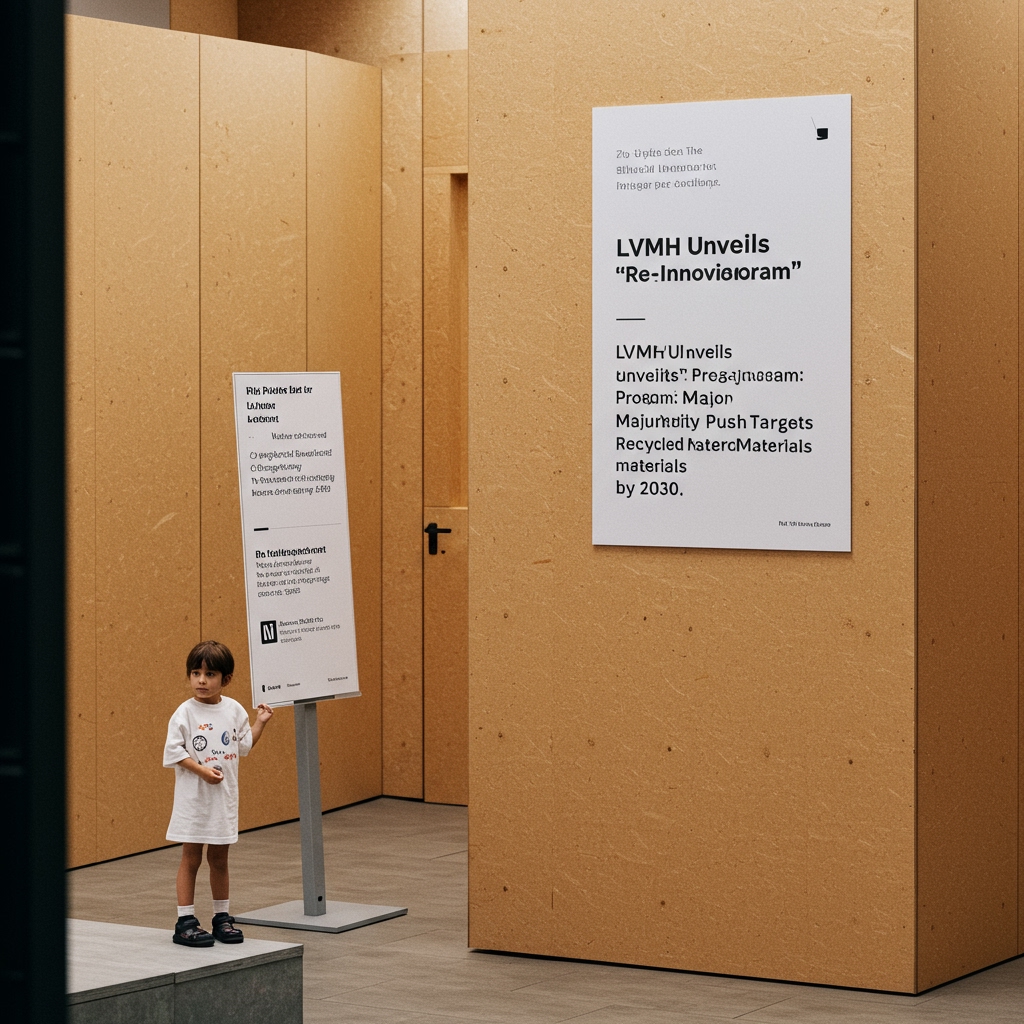LVMH Launches Landmark ‘Re-Innovate’ Circularity Program
Paris, France – On January 28, 2025, LVMH Moët Hennessy Louis Vuitton, the world’s leading luxury group, announced the launch of a transformative new initiative aimed at significantly enhancing circularity across its prestigious portfolio of Maisons. Dubbed “Re-Innovate,” this ambitious program represents a strategic pivot towards more sustainable operational models, specifically targeting the increased use of recycled and upcycled materials.
The core objective of the “Re-Innovate” program is to achieve a significant benchmark: utilizing 50% recycled or upcycled materials within selected product categories by the year 2030. This ambitious target initially focuses on critical product lines within the luxury sector, including leather goods and textiles. The selection of these categories underscores their prominence within the group’s key brands and the potential for substantial environmental impact through circular practices.
Strategic Pillars of ‘Re-Innovate’
The “Re-Innovate” program is built upon several key pillars designed to foster a comprehensive approach to circularity. Central to this effort is substantial investment in material science research. Recognizing that the quality and aesthetic appeal synonymous with luxury must be maintained, LVMH is committing significant resources to developing and sourcing innovative materials. This includes researching advanced recycling techniques for existing luxury materials, exploring novel ways to upcycle pre-consumer and post-consumer waste streams, and developing bio-based alternatives that meet the group’s exacting standards. The investment signals a long-term commitment not just to using existing recycled options, but to actively driving innovation in sustainable material creation specifically tailored for the high-end market.
A second, equally vital component of the program is the expansion of global repair services. Longevity is an inherent aspect of luxury goods, and enhancing repair capabilities directly supports a circular model by extending the lifespan of products. The “Re-Innovate” program includes plans to significantly invest in and broaden the network and capacity of repair workshops worldwide. This involves training skilled artisans in restoration techniques for various materials and product types, improving logistics for handling repairs, and making these services more accessible to clients globally. By facilitating repairs, LVMH aims to reduce the need for premature replacement and encourage clients to maintain and cherish their luxury items for generations.
Initial Rollout and Future Vision
The “Re-Innovate” program is set for an initial rollout across some of LVMH’s most iconic and influential Maisons. Louis Vuitton, Dior, and Celine have been identified as the first brands to integrate the program’s principles and targets into their operations and product development cycles. The selection of these powerhouses within the group allows the “Re-Innovate” initiative to gain immediate traction and visibility, setting a precedent for other brands. Lessons learned from the implementation within these major houses are expected to inform the potential expansion of the program across additional Maisons within the vast LVMH portfolio in the future.
The launch of “Re-Innovate” was formally announced during a press conference held in Paris, France, on January 28, 2025. Group executives highlighted the program as a critical step in LVMH’s broader environmental strategy, reinforcing the company’s commitment to playing a leading role in the sustainability transition within the luxury industry. They emphasized that circularity is not merely an environmental imperative but also an opportunity for innovation, creativity, and strengthening the unique bond between Maisons, their creations, and their clients.
Industry Context and Significance
The luxury sector, traditionally focused on durability and timeless design, is increasingly facing pressure and recognizing the necessity to adopt more overtly sustainable practices. While the inherent quality and longevity of luxury goods already contribute to a form of sustainability, the move towards specific targets for recycled and upcycled content, coupled with enhanced repair services, represents a significant evolution. LVMH’s “Re-Innovate” program, with its clear quantitative targets and focus on key material categories and flagship brands, positions the group at the forefront of this industry shift.
The target of 50% recycled or upcycled materials by 2030 for leather goods and textiles presents both a challenge and an opportunity. Sourcing sufficient quantities of high-quality recycled materials that meet luxury standards is complex. Similarly, developing effective and scalable upcycling processes that maintain product integrity and desirability requires considerable innovation. The investment in material science research is therefore crucial to overcoming these hurdles and ensuring that circularity enhances, rather than compromises, the luxury experience.
Furthermore, expanding global repair services addresses a practical aspect of circularity that resonates directly with consumers. Making it easier and more efficient for clients around the world to have their beloved items repaired encourages responsible ownership and prolongs the product lifecycle, embodying the ultimate form of recycling – continued use.
In conclusion, LVMH’s “Re-Innovate” program marks a significant and concrete commitment to embedding circular economy principles deeper into its business model. By setting ambitious material targets, investing in critical research, and strengthening service infrastructure, the group is not only responding to growing environmental concerns but also actively shaping the future of sustainable luxury. The initial focus on Louis Vuitton, Dior, and Celine provides a strong foundation for this initiative, signaling LVMH’s intent to leverage the influence of its most prominent brands to drive meaningful change within the industry by 2030 and beyond.





